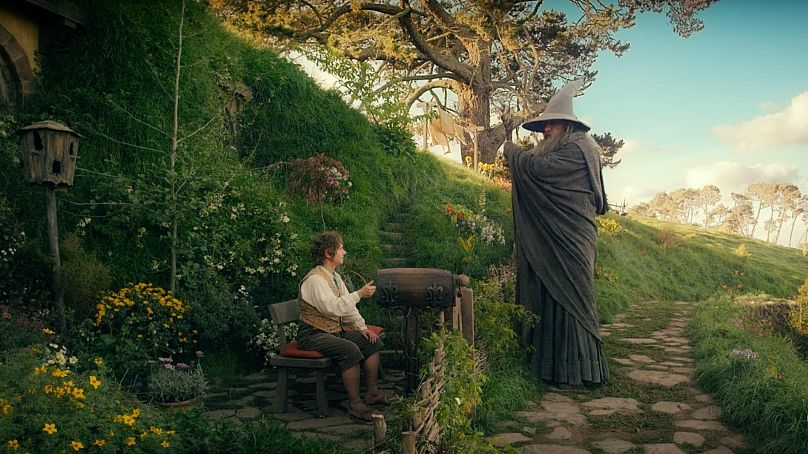21 September 1937: JRR Tolkien releases ‘The Hobbit’.
“Do you remember the 21st night of September?” Earth, Wind & Fire singer-songwriter Maurice White asked on their 1978 single ‘September’. While White may have been talking about the due date of his wife Marilyn’s due date, it’s a sentiment that could easily be shared by John Ronald Reuel “JRR” Tolkien.
The British author and philologist is best known for his ‘The Lord of the Rings’ trilogy, released 1954-1955. But before ‘The Lord of the Rings’ came a short children’s novel that paved the way for his fantasy epic.
Released on this day in 1937, ‘The Hobbit’ follows Bilbo Baggins, the titular “Hobbit” – a humanoid creature defined by its short stature, big feet and small-town mentality – as he embarks on an unexpected journey through Middle-earth. With the guidance of a wizard called Gandalf and thirteen dwarves, Bilbo’s adventure takes him to the dragon Smaug in an effort to steal back dwarf treasure.
The popularity of ‘The Hobbit’ was so immediate that Tolkien’s publisher Stanley Unwin demanded a sequel. The sequel would become Tolkien’s magnum opus. In the years since its publication, ‘The Lord of the Rings’ has made “Hobbits”, “Gandalf” and “Bilbo Baggins” household names. This was taken to another level of ubiquity with Peter Jackson’s Academy Award-winning trilogy of films released 2001-2003.
While Jackson followed his The Lord of the Rings films with a trilogy of The Hobbit films to incredible financial returns, the critical reception of his second trilogy was far more muted. It’s a general trend that has occurred throughout time that Tolkien’s trilogy eclipses its originator. Tolkien himself even went back to amend details of ‘The Hobbit’ to conform to the new plot of his books for its second print edition.
So today, let’s focus on what makes ‘The Hobbit’ special. Instead of dismissing the wildly popular book (it’s sold an estimated 100 million copies) as just a childish prequel to the latter epic; ‘The Hobbit’ should instead be seen as a landmark piece of children’s literature that laid the groundwork for one of the densest fantasy worlds ever imagined.
It’s precisely because of its dynamic use of children’s literature that Tolkien could so comfortably explore such a wildly whimsical setting as Middle-earth, only to darken the hue of the plot in future books.
When it was released, children’s literature was in an uncomfortable place. The Golden Age of Children’s Literature which saw the release of books like ‘Alice’s Adventures in Wonderland’, ‘The Jungle Book’ and ‘Peter Pan’ had ended abruptly with the First World War. A generation of men were traumatised. The damage of the War led to a slower production rate of literature with a new philosophical bent. The post-War ‘Winnie-the-Pooh’ and ‘Mary Poppins’ both dealt with worlds absent of traditional parenting dynamics.
‘The Hobbit’, released in the same interwar era, was entirely different. It had songs, humour, and most importantly… action. While Bilbo may start the story as a classic Hobbit, preferring to stick to the parochial life of the Shire, he is thrust into an action-packed adventure with swords, trolls and dragons.
Tolkien adamantly stated that ‘The Lord of the Rings’ “is neither allegorical or topical”. With its depiction of warfare and a magical world in decline matching Tolkien’s fighting experience of the First World War and witnessing of the Second, the lady doth protest too much, methinks. ‘The Hobbit’ is far more free of that label. It’s a moral story that espouses the values of kindness over greed without ever feeling trite.
Every moment is earned, every joke lands, and every step along the journey is more exciting than the last. It’s no surprise that ‘The Hobbit’ has endured. It’s the sine qua non of children’s fantasy literature.












